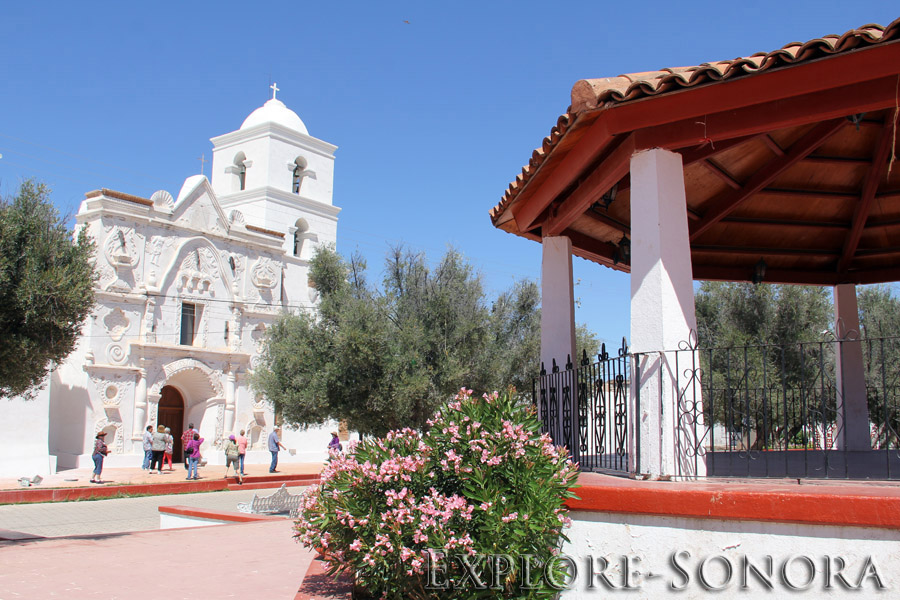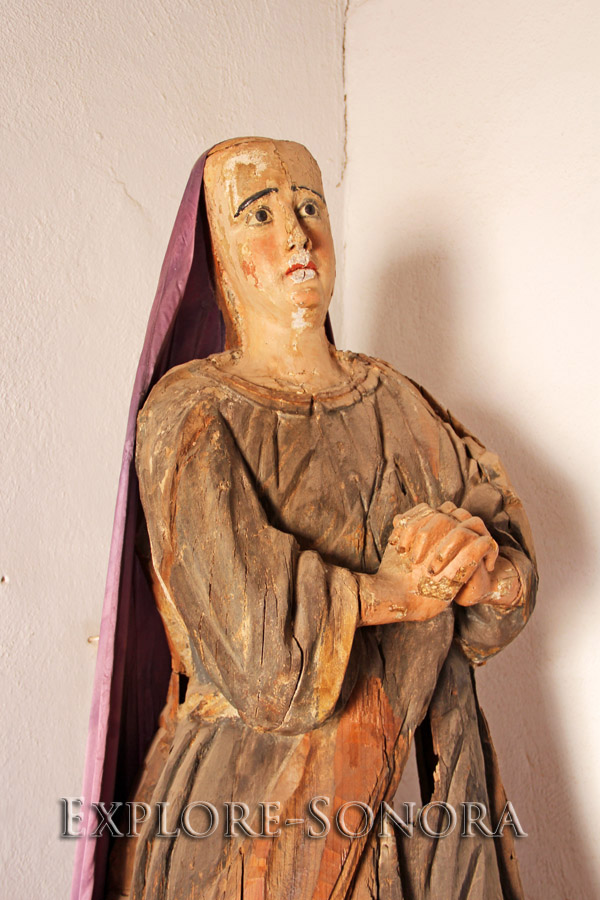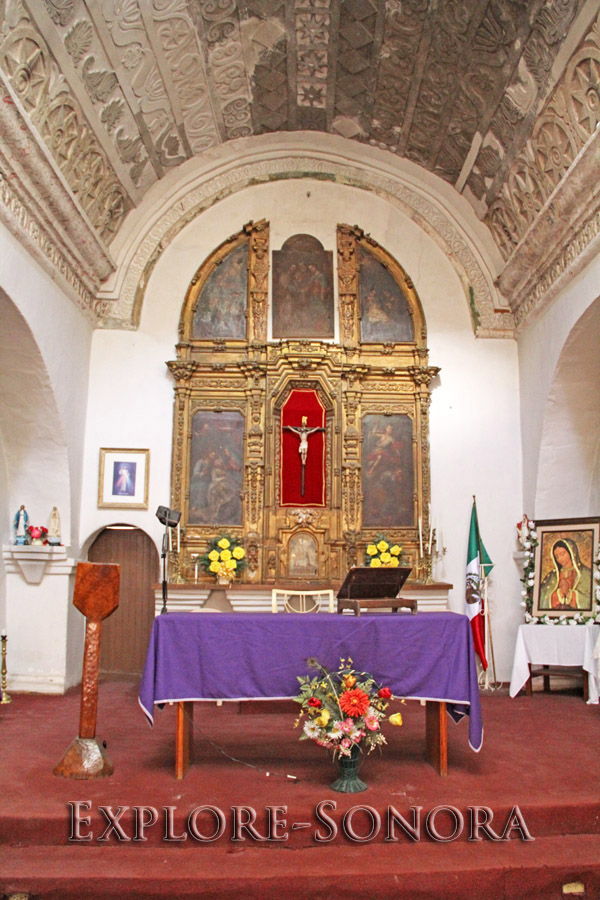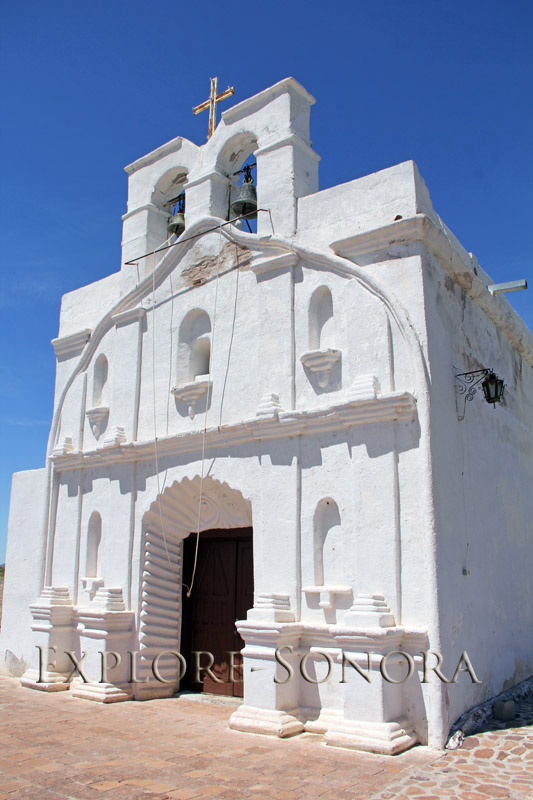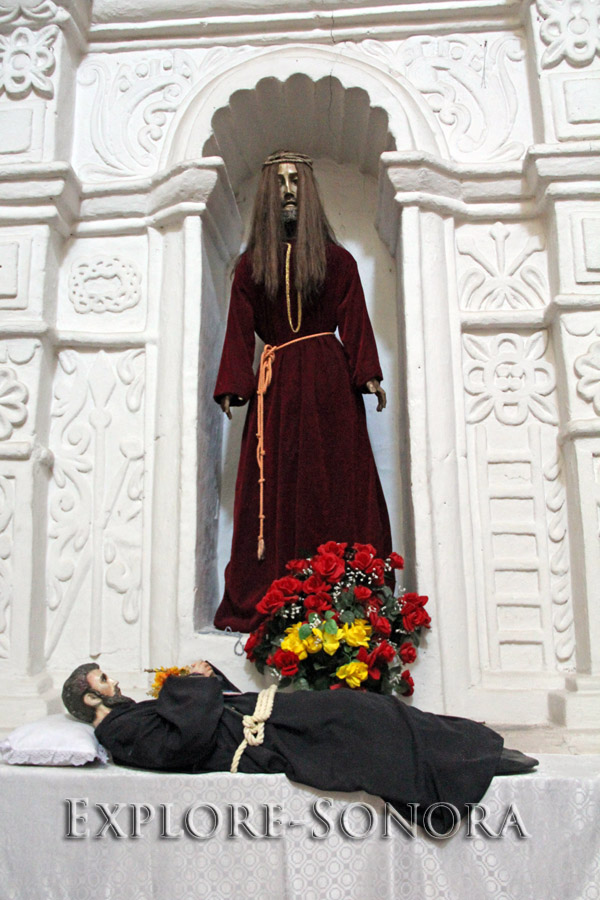Kino Missions in Sonora, Mexico
Italian Jesuit Priest Father Eusebio Francisco Kino (1645 – 1711) arrived in the Pimería Alta region (now Northern Sonora and Southern Arizona) in 1687 at the age of 42. That year he established his main Pimería Alta church and headquarters near the pueblo of Cucurpe.
For the next 24 years, until his death in 1711, Father Kino made a significant impact on the region and its people. Among his accomplishments was the establishment of 24 mission churches in the areas now known as Baja California, Sonora and Arizona.
Jesuits were expelled from Spanish territories by the King of Spain in 1767, and current mission churches were built by the Franciscans who took their place in Sonora in the eighteenth and nineteenth centuries. Any remaining original Kino missions have crumbled to dust, or in some cases are visible still in locations like San Valentin del Bizani and Cocóspera, where some remainders of the adobe walls of the mission exist.
Following are locations of some of the missions he established in the northern region of Sonora, Mexico, many of which now have Franciscan mission churches. At the time, missions were assigned an administrative classification as a head mission church, or cabecera, or a satellite mission of the main church, known as visitas.
1687: Mission Nuestra Señora de los Dolores
Father Kino founded the mission as his headquarters and the head mission of the Pimería Alta. It was located in the San Miguel River in the Pima Pueblo of Cosari, Sonora, about 30 km north of Cucurpe. It had visitas at Remedios and Cocóspera. Dolores was never an active mission during the Franciscan years, and is now in complete ruins.
1687: Nuestra Señora de los Remedios de Doágibubig
The mission at the O’odham village of Doágibubig was established by Father Kino on March 15, 1687. He started construction of the mission church in 1695, and in 1698 blessed a statue of Nuestra Señora de los Remedios. Church construction was completed in 1703, and it was dedicated in 1704.
Nuestra Señora de los Remedios was closely affiliated with the mission at Cocóspera, and both were under the direct supervision of Father Kino from his headquarters mission at Dolores.
All that remains of the church today is a small part of the ruins of one wall.
Located in San Ignacio, Sonora, this was Kino’s second mission in the Pimería Alta region. Its first priest was Father Luis María Pineli, and Father Agustín Campos served as the mission priest from 1695 to 1735.
After Kino’s death in 1711 it was the only active mission church for 20 years. The current church was built by the Franciscans in the late eighteenth century on the site of the previous Jesuit mission. Photos and more information.
1687: San José de Imuris
The Imuris mission was established as a visita of Caborica in San Lazaro. The church was in ruins by 1772. The current San José de Imuris church is located on the city plaza in Imuris.
1690: San Antonio Paduano del Oquitoa
Founded as a visita to Caborca, this mission was later a visitia to Tubutama and Atil before becoming a Cabecera. San Antonio Paduano was constructed in the pueblo of Oquitoa, Sonora and its first mission priest was Father Antonio Arras. The current church was built by the Franciscans and was renovated in 1920 and 1959. Photos and more information.
1690: Mission San Pedro y San Pablo del Tubutama
The original church was built in 1706, and Antonio Arras was its first resident priest. The mission had visitas at Santa Teresa, Atil and Oquitoa. The present church was built by Franciscan priest Father Bartolomé Socies in 1791 and has an adjoining museum with church relics. Photos and more information.
1690: Santa Maria Magdalena
Located in Magdalena de Kino, the original church was destroyed during an Indian uprising in 1695. The current church is a modern structure built by the Franciscans, and a nearby capilla (chapel) is dedicated to the Saint San Francisco Javier. A crypt bearing Kino’s remains is located on the other side of the plaza.
1690: Santa Gertrudis del Sáric
This mission was established in Sáric, which is 19 miles northeast of Tubutama. Father Pedro San Doval was its first priest. A church was built in 1702, with visitas in Busanic and Aquimuri. The church still stood in 1772 but fell into ruins during the Franciscan period.
1691: San Luis Bacoancos
This mission was founded and soon abandoned due to Apache attacks.
1691: Nuestra Señora del Pilar y Santiago de Cocóspera
Located a few miles north of Nuestra Señora de los Dolores, its first priest was Father Juan de Castillejo, who was replaced later that year by Father San Doval.
The mission at Cocóspera was closely affiliated with the mission Santa María de Bugota, and it was destroyed several times from Indian raids. The church was rebuilt over the existing adobe walls of the original church by Franciscan priest Father Roche. The ruins of that church still exist today. Photos and more information.
1692: Santa Teresa de Atil
Santa Teresa was established by Father Kino in the pueblo of Atil as a visita for Tubutama, and all that remains of it is ruins of its original adobe walls. The original statue of Santa Teresa is in the church of Saints Peter and Paul in Tubutama.
1693: La Purísima Concepción de Nuestra Señora de Caborca
Founded in December 1693, mission priest Francisco Javier Saeta was martyred at the mission in 1695, and another priest, Tomás Tello, was martyred here in 1751. Construction for the current church began in 1803 and it was dedicated on May 8, 1809.
Residents of Caborca defended the church and town from filibustering Americans led by Henry Crabb in 1857.
The church was badly damaged by floodwater from the Rio Concepción in the early twentieth century, but it was restored in 1957 and again in the early part of this century. Read more about La Purísima Concepción de Nuestra Señora de Caborca.
1693: Nuestra Señora de Loreto de San Marcelo del Sonoita
This was the northwesternmost Kino mission in Sonora, located in what is now the border town of Sonoyta. Construction began on April 4, 1701 and its last resident missionary, Father Enrique Ruhen, was martyred at the church by Indians in 1751.
Originally named San Juan de Bisaning, or Busanic, it was established as a visita to Caborca. Father Kino and Juan Mateo Mange blessed the mission on February 14, 1694, the feast day of Saint Valentine. It is located in the desert approximately 10 miles west of Caborca.
The mission was constructed in 1706, and the church and a home for a priest were in existence as late as 1772. Today, the mounds of the church are still visible, and it is also the site of a Tohono O’odham cemetery. Photos and more information.
Founded as a visita of Caborca, was located in Pitiquito, Sonora and is now a lovely Franciscan church in that quaint Sonoran pueblo. The church is unique because it has several hand-drawn symbols dating back to the 18th century. Photos and more information.
1695: San Lázaro
San Lázaro was founded as a visita for Santa Maria de Bugota, and Father Kino built its first church along the Santa Cruz River in 1706. It was soon abandoned after Apache attacks.
1698: Santa Maria de Bugota
Located in the pueblo of Santa Cruz, Kino said the first mass here in November 1698 and built the church in 1706. That church was destroyed by Indians and rebuilt in 1730. Later known as Santa Maria de Suamca, it was at times a mission and at other times a visita of Cocóspera.
1699: San Estanislao de O’otcam
Located near the international boundary, west of the headwaters of the Rio Altar, local Indians built a church here in 1702. Father Kino and Father Manuel Gonzáles celebrated the first masses here.
1704: Nuestra Señora de la Ascención de Opodepe
1704: San Simón y San Judas del Síboda
Now known as Cíbuta, located just south of the 21 km customs checkpoint on highway 15, south of Nogales. Father Kino had a small ranch here, where he raised cattle and grain.
Sources:
Wikipedia – Spanish missions in the Sonoran Desert
Eckhart, George B. (1960), A Guide to the History of the Missions of Sonora, 1614-1826. Arizona and the West, 2(2), 165-183.

